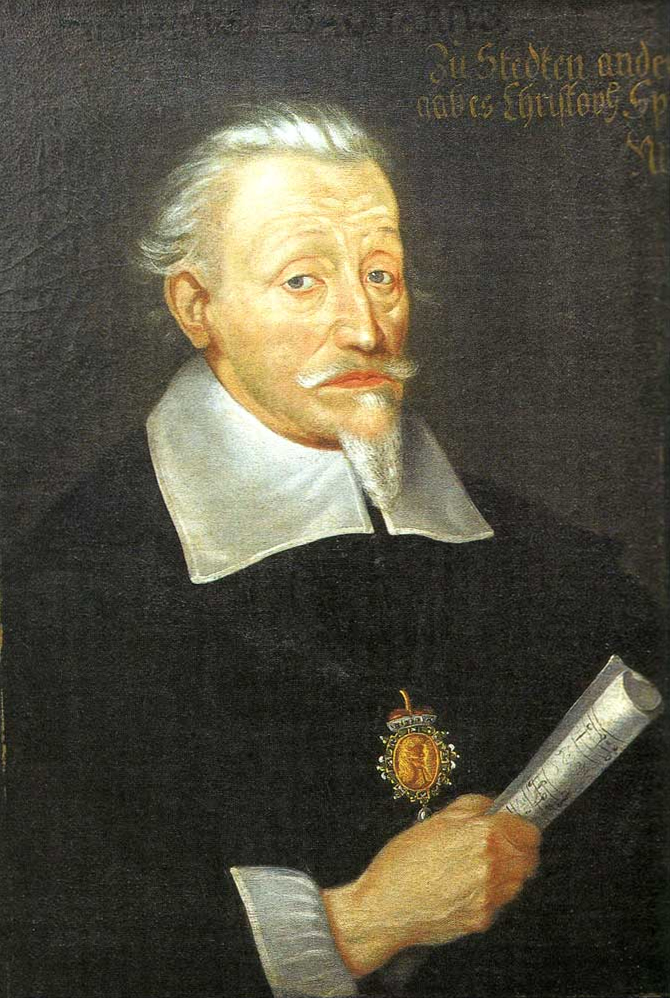Heinrich Schütz (1585 – 1672) is regarded as one of the most important German composers before Bach. Schütz studied with Giovanni Gabrieli in Venice, and his early works reflect the grandiose Italian style of his teacher and also influences of Monteverdi, whom he met later in life. Schütz successfully blended the monodic, florid Italian style for the solo voice or duets with the German chorale tradition. Over the course of his life, his style became more austere and intimate, in part driven by the fact that resources in Germany were scarce during the Thirty Years War (1618 – 1648).
The motet “Wohl dem, der ein tugendsam Weib hat” was composed for a wedding (Joseph Avenarius and Anna Dorothea Görlitz) in Dresden on April 21st, 1618. The Italian influence is still very apparent in its scoring for double choir and continuo, in antiphonal style, with interpolation of passages for solo voices. Interestingly, the two choirs call for different formations – Choir I is SSAT and Choir II, SATB. The voices can be doubled by instruments, such as cornetti or brass.
After an initial statement by a solo bass with cornetti, the main refrain is set to a ritornello, first stated by both choirs homophonically and then antiphonally. The 3 verses of the poem are set as the “Intermedia” for different solo vocal configurations: Intermedium I for soprano and tenor, and the other two for soprano, alto, tenor and bass.
